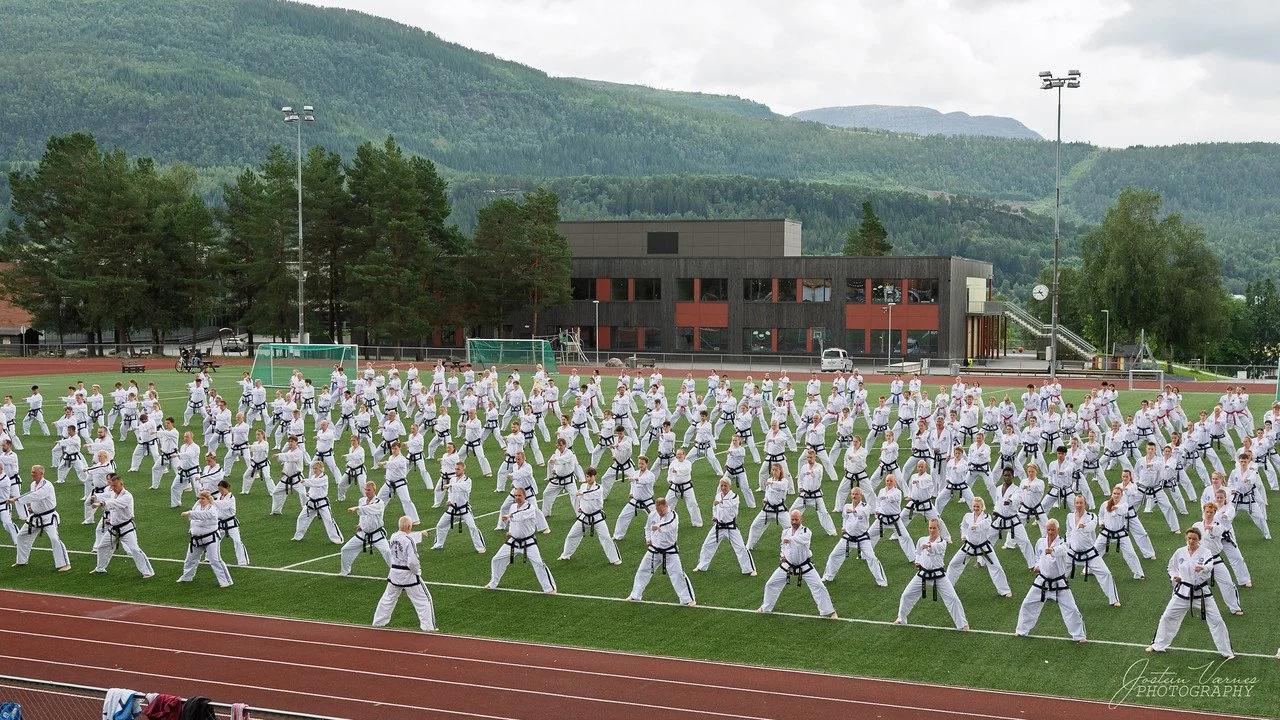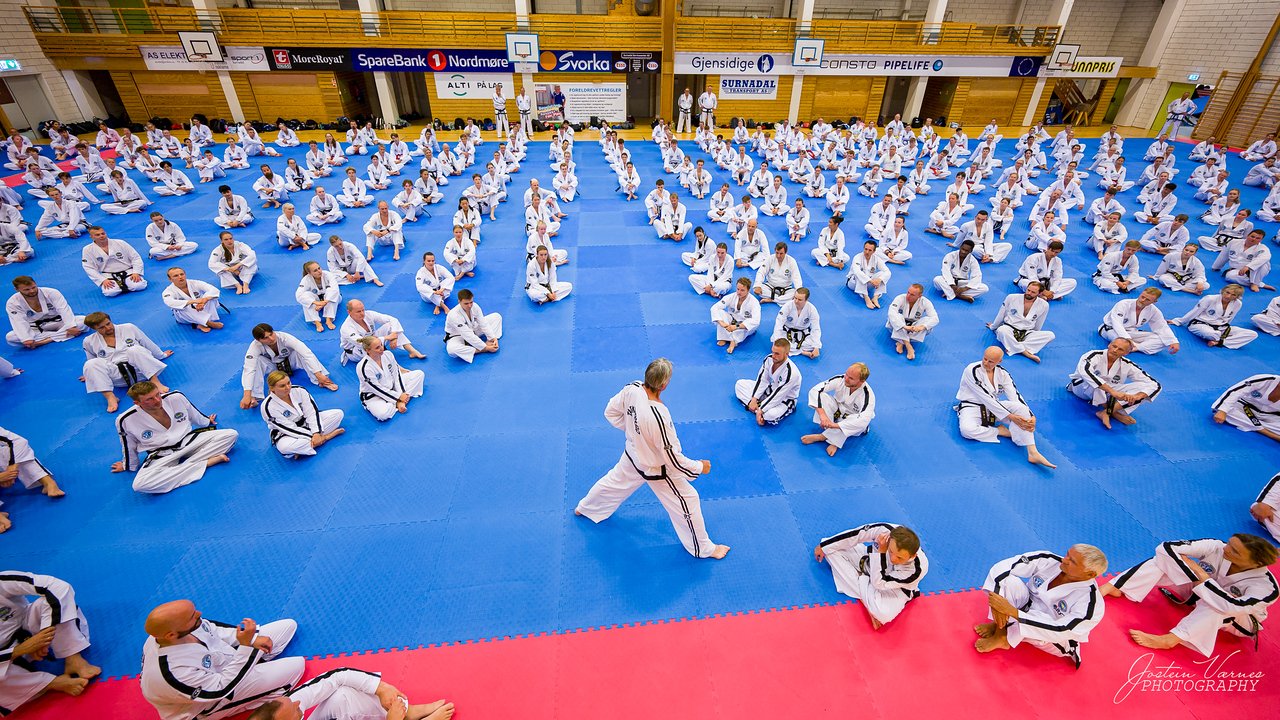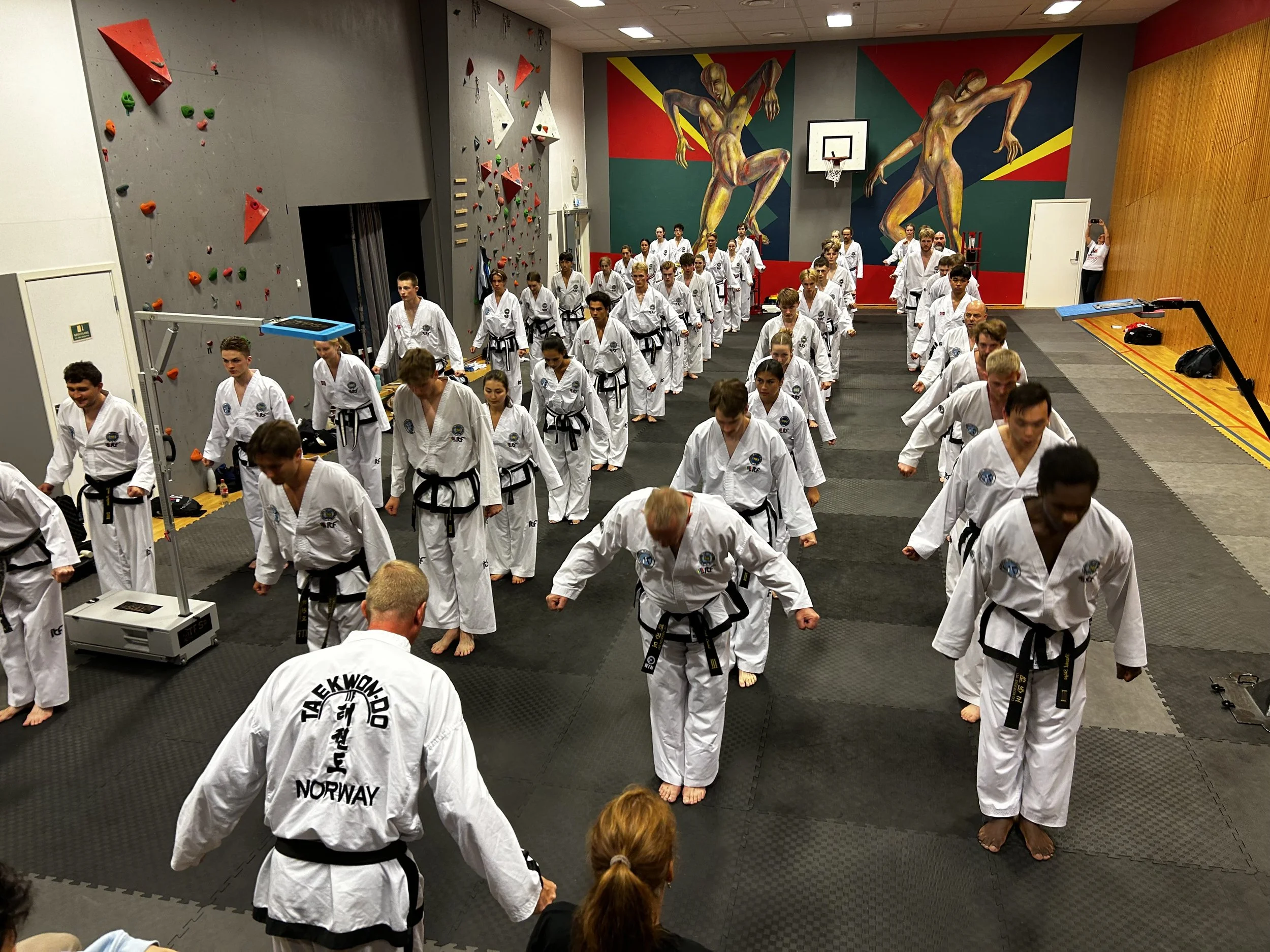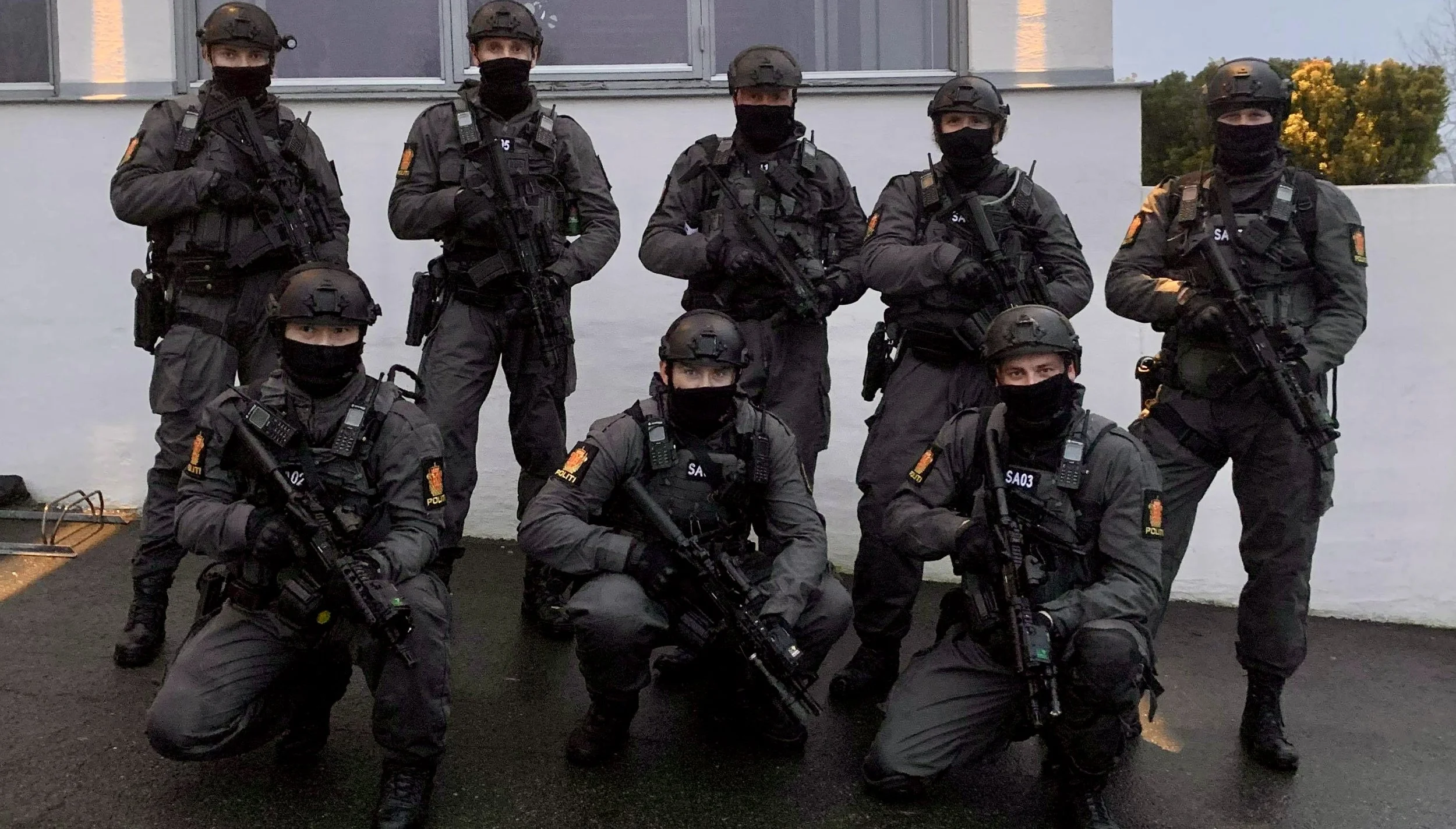Big vs. Small Movements! ITF Radix reflections from the NTN Summer Camp in Surnadal, Norway
By Roy Rolstad, VI Dan ITF Taekwon-Do
At this year’s NTN Summer Camp in Surnadal, I had the privilege of teaching daily self-defense sessions alongside the regular black belt curriculum classes. The camp itself ran like a well-oiled machine thanks to a structure introduced last year, a structure that not only improved logistics but also created space for deeper, more focused training.
Grand Master Per Andresen leads the tradition of doing one joint session as the opening of the annual NTN Summer Camp.
The Camp Flow
With 400 participants from all over Norway, Sunday was devoted to arrivals, registration, and a short all-together session with Grand Master Andresen at 16:00, more a motivational gathering than a technical class. Monday to Thursday followed a rhythm:
0700: Optional stretching or 24-patterns walkthrough (4th Dan and above).
09:00–10:30: Coloured belts training in their own venues.
11:00–12:30: Black belts in degree-specific groups.
12:30–14:30: Long lunch break.
14:30–15:30 / 16:00–17:00: Afternoon workshops on varied topics.
Evening: Lectures, plus a late-night 22:00–23:00 power and special technique session for the night owls.
This format, developed by Sabum Gunnar Rugsveen, gave early risers and late-night types their ideal slots, eased instructor workload, and provided breathing room to socialise.
Grand Master Per Andresen in action
Early birds preforming all 24 patterns at 07:00 in the morning. Conducted by Master Snorre Edvardsen.
Sabum Robert Skagseth conducted a class of power, and special technique every late evening from 22:00 till 23:00. As you can see it was packed with people
My Workshops: Self-Defense Through ITF Radix
My post-lunch sessions were structured so each day built on the last:
Monday: Basics with releases from grabs and holds (from ITF patterns).
Tuesday: Takedowns with submissions.
Wednesday: Knife defenses with disarms and counterattacks.
Thursday: Self-defense free sparring with takedowns, get-ups, and multiple opponents.
All were grounded in ITF Radix, with free sparring and pattern applications, bridging the gap between solo performance, practical partner work and live free sparring.
Sabum Robert Skagseth helping me out with the Monday self defense training
The Big vs. Small Discovery
During one session, I realized a familiar teaching habit of mine had unintended consequences. To make techniques clear, I often demonstrate with slightly exaggerated movements. But when I watched the class work, I saw they were copying exactly what I showed, meaning their application movements were unnecessarily big.
We stopped and ran a deliberate exercise:
Super Small – minimal chambers, tight stances, short strikes.
Super Big – long stances, wide chambers, extended techniques.
Normal – the balanced size as in the pattern.
When they cycled through these, everyone became more conscious of how movement size changes both function and effect.
Why Size Matters
Patterns themselves contain big, small, and normal movements. General Choi’s manuals, if read closely, reveal differences in chamber size, stance length, and arm extension from one technique to another, each for a reason.
Big movements generate more visible power, are easier to read, and are ideal for demonstrating clear technique. They also allow more time for weight transfer, hip rotation, and full muscle recruitment.
Small movements are compact, faster, and harder to detect, excellent for close-range self-defense, conserving energy, and avoiding telegraphing.
The art is knowing when to go big or small, and in Taekwon-Do, that decision is context-driven.
Three Arenas: Three Strategies
1. Gradings & Demonstrations
Here, clarity and presentation matter most. A Hosinsul presentation at a grading is as much performance as it is technical assessment. Examiners and spectators should be able to clearly see the applications of your chambers, stances, and final counters. Too-small movements risk looking sloppy or incomplete, even if they’re practical.
Rule: Go slightly bigger than in a fight. Show your work like in a movie scene.
2. Sparring Competitions
You have two audiences: the referees and your opponent.
For scoring, make your valid strikes clean and visible so referees recognise them.
For tactics, hide what you don’t want seen, feints, set-ups, or borderline actions should be as subtle as possible.
Rule: Make scoring big and clear, make deception small and invisible.
3. Self-Defense
The opposite of competition logic. In a real threat:
Go big when you need to draw attention, create witnesses, or shock the aggressor into stopping.
Go small when you want to resolve the threat quietly without escalation or public scene. Remember you can use force with discretion, if you don’t want any witnesses.
Rule: Choose based on urgency, stakes, and consequences.
The Law Enforcement Parallel:
"The Deadly Force Triangle"
At camp, I spoke with a Sabum Tore, who’s a breacher at the local SWAT team. During breakfast we discussed how “big vs. small” connects to the Deadly Force Triangle, a model similar in logic to the fire triangle (you know: Fule, heat and oxygen)
I’ve had the chance to work with tactical principles from several angles, as an instructor with the Norwegian prison service, in collaboration with law enforcement professionals, and doing stunt work in SWAT roles for several TV and film productions.
Whether in real-world operations or staged action scenes, the principle is the same: control the situation by taking away one key factor.
The three points:
Ability: Means to cause harm. Remove weapons or disable capability.
Opportunity: Position to use that ability. Create distance, block access.
Jeopardy: Intent to cause harm. De-escalate, change their intent.
Remove one point, and the threat collapses.
The StageCombat.no SWAT stunt team at the TV series “Be Foreigners”
Applying This Early
Here’s an example on applying this principles to a self defense situation.
Imagine a scenario with a drunk uncle at a wedding:
Jeopardy: Voice and posture turn aggressive. You respond calmly, open hands, non-threatening: “Looks like a miss understanding.”
Ability: He’s holding a beer glass. You shift so a table is between you. Or simply remove the glass from him.
Opportunity: He step closer. You create space, angle your body, or move toward his shoulder (ref. NTN Instructor’s course 6)
If you remove one of those three, the potential for violence is gone.
In each step, you can go big (visible, dramatic) or small (subtle, discreet), and the right choice depends entirely on the outcome you want.
To Conclude
Movement size is not fixed, it’s a tactical choice.
The patterns give us all three sizes with long and short moves.
The grading floor rewards clarity with big and wisible moves.
The ring rewards visibility for scoring and invisibility for deception of both umpires and opponents.
Real life demands adaptability.
As martial artists, we should train in all three, learn the strengths and trade-offs of each, and develop the judgment to choose the right size for the moment.
Big or Small, the power lies in knowing when.
For more about NTN, visit www.ntkd.no
And always remember to be kind, especially when it’s not deserved!
“This is the way!”







